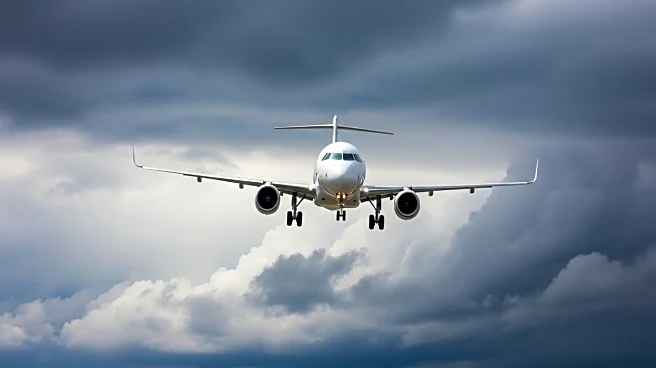What's Happening?
A new study from the University of Reading suggests that climate change is increasing atmospheric instability, leading to a higher risk of clear-air turbulence for airlines. Clear-air turbulence is difficult to forecast and can cause injuries to passengers and crew. The study, published in the Journal of the Atmospheric Sciences, used 26 global climate models to analyze the impact of warming temperatures on jet streams at typical cruising altitudes. It found that windshear will increase by 16-27%, and the atmosphere will become 10-20% less stable from 2015 to 2100. This increased instability is expected to create favorable conditions for clear-air turbulence.
Why It's Important?
The findings have significant implications for the aviation industry, as increased turbulence can affect flight safety and passenger comfort. Airlines may face higher operational costs due to the need for more fuel to navigate around turbulence and potential delays. The study highlights the broader impact of climate change on various sectors, emphasizing the need for improved forecasting and adaptation strategies. The aviation industry may need to invest in advanced technologies and training to better predict and manage turbulence risks.
What's Next?
The study's authors plan to conduct further research on the frequency and severity of clear-air turbulence events. The aviation industry may need to collaborate with meteorologists and climate scientists to enhance forecasting accuracy and develop strategies to mitigate turbulence risks. Policymakers and industry leaders may also need to consider the implications of climate change on aviation safety and infrastructure planning.
Beyond the Headlines
The study underscores the interconnectedness of climate change and its impact on various industries. It highlights the importance of addressing climate change through global cooperation and policy measures. The aviation industry, as a significant contributor to greenhouse gas emissions, may face increased pressure to adopt sustainable practices and reduce its environmental footprint.











